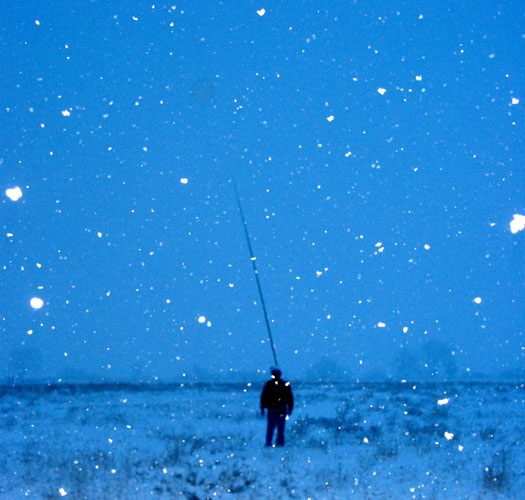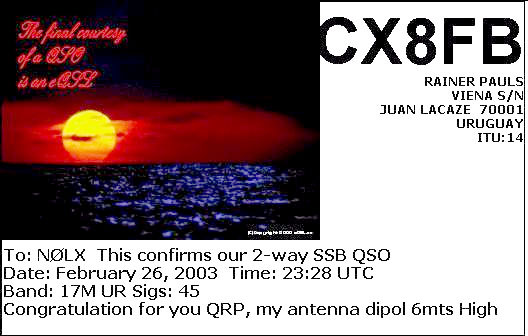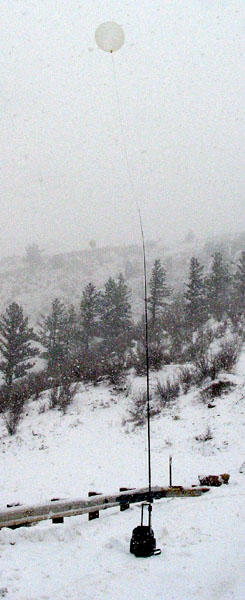Balloon with fishing pole
| My next experiments were with a shortened halfwave (Zepp) using the same fiberglass pole, but no more balloons. Follow the progress of the shortened Zepp. |
I had worked with a balloon-lifted
antenna
on my backpack for some time, but discovered a problem with the
design every time the wind blew. I would soon find myself with a very
low horizontal antenna and the balloon whipping around behind me. I
came up with the idea of lashing a
16-foot fiberglass fishing pole to the pack, taping the wire antenna
alongside and letting the balloon lift the remaining wire. This way,
most of the antenna would remain vertical even in a stiff breeze.




| On February 27, 2003, I climbed up to the top of a nearby
mountain and tried out the new configuration. It was a cold and snowy
day, but propagation was favorable. With my FT-817 set to 2-1/2 watts
to conserve power, I worked Brazil and Uruguay. At the bottom of the page is the
qsl.cc card I received from Rainer, CX8FB. He was 6,000 miles away
which made it a 2,400 miles-per-watt contact. Below is a picture of me returning from another winterly day in the field. You can just barely see the balloon above the pole. I was the only one out there that evening and I really wanted to get a shot of this. I rolled down the window of the pickup, balanced the camera against the headrest and set the timer. It took several tries of hitting the shutter, running fifty feet out into the field to get everything in the image and then spinning around to face the camera. That explains the less-than-vertical pole. |

| Here is a copy of the QSL card I received for working Uruguay with the balloon/pole setup and 2-1/2 watts. |
